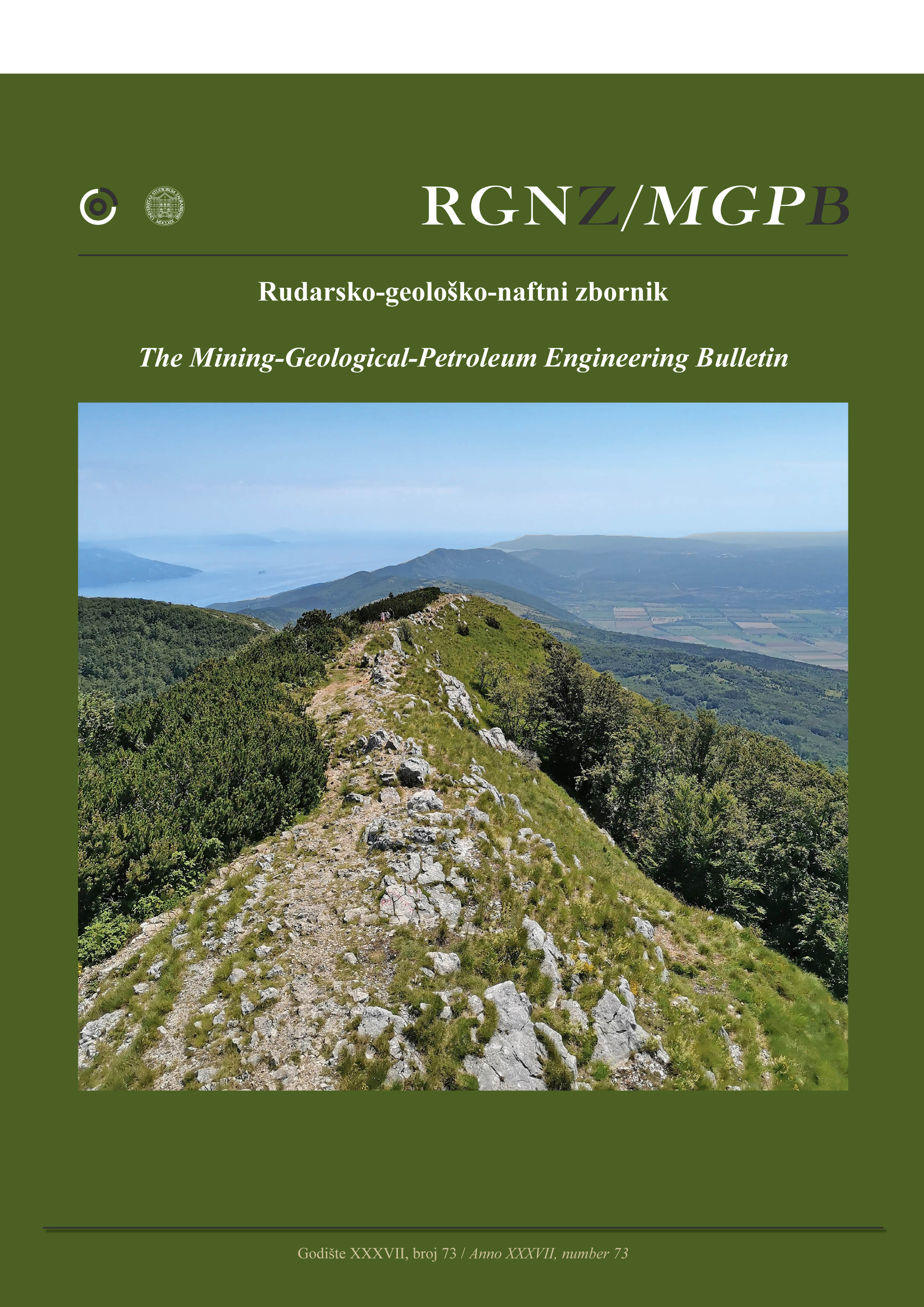Geomechanical Response of Buner Marble, Pakistan, to Elevated Temperatures: Triaxial Strength Analysis through Single and Multistage Approaches
DOI:
https://doi.org/10.17794/rgn.2025.2.8Keywords:
thermal treatment, thermal cracking, marbles, physico-mechanical properties, single and multistage triaxial testingAbstract
This study investigates the effect of three-dimensional stress on the strength of marble from the Buner District, Khyber Pakhtunkhwa. It provides a comparative analysis of single and multi-stage triaxial tests to evaluate marble strength under ambient and elevated temperatures. Additionally, this study examines the physico-mechanical properties of the selected marble to enhance the understanding of its performance under varying conditions. A total of five bulk marble samples, (BM1 to BM5) were collected. From these samples, seventy (70) cores were extracted for the investigation of various physico-mechanical properties. Physical tests, including specific gravity, porosity, water absorption, and ultrasonic pulse velocity (UPV), as well as mechanical tests, such as unconfined compressive strength (UCS), unconfined tensile strength (UTS), point load test (PLT), and triaxial testing, were conducted. Physical properties were determined for five specimens (BM1 to BM5) selected from the bulk sample, while mechanical tests were carried out on the remaining 65 samples. Overall significant uniformity was observed in the values of all physico-mechanical properties except water absorption, which was found relatively higher in the case of BM3 and BM5 (0.093%) due to the increased amount of hydrophilic minerals in these samples. The remaining core specimens were treated at elevated temperatures (50°C, 75°C, 100°C, and 150°C). The mechanical properties including UCS, UTS, PLT, and triaxial tests were obtained on samples at ambient (25°C) and elevated temperatures. In the case of UCS and UTS, it was found that strength increases with an increasing temperature to a threshold temperature of 100°C, followed by a decrease at 150°C. Similarly, for the strength parameters (cohesion and friction angle) obtained during the triaxial tests, the threshold temperature was again found to be 100°C, thereafter strength degradation of the rocks occurred. The increase in strength is attributed to mineral thermal reactions causing the new bonding agents leading to the strengthening of rocks. Whereas, the decrease from 100°C to 150°C occurred due to the mineral thermal expansion resulting in thermal cracking and reduced strength. Based on the derived results, analysis, and their comparison with international standards, the studied rocks can be used for various underground construction purposes.
Downloads
Published
Issue
Section
License
Copyright (c) 2024 Asif Ali, Waqas Ahmed, Abdul Rahim Asif, Muhammad Yasir, Ihtisham Islam, Adnan Qadir, Jehanzeb Khan

This work is licensed under a Creative Commons Attribution 4.0 International License.
Creative Commons-BY
Authors who publish with this journal agree to the following terms:
In agreeing this form, you certify that:
- You read the ethical codex of the RGN zbornik available at journal web.
- You submitted work is your original work, and has not previously been published and does not include any form of plagiarism.
- You own copyright in the submitted work, and are therefore permitted to assign the licence to publish to RGN zbornik.
- Your submitted work contains no violation of any existing copyright or other third party right or any material of an obscene, libellous or otherwise unlawful nature.
- You have obtained permission for and acknowledged the source of any illustrations, diagrams or other material included in the work of which you are not the copyright owner.
- You have taken due care to ensure the accuracy of the work, and that, to the best of your knowledge, there are no false statements made within it.
- All co-authors of this submitted work are aware of, and in agreement with, the terms of this licence and that the submitted manuscript has been approved by these authors.
Publication licence
You retain copyright in your submitted work, according to journal license policy (CC-BY). By signing this form you agree that RGN zbornik may publish it under the publication licence. In summary the licence allows the following:
Anyone is free:
- To copy, distribute, display, and perform the work.
- To make derivative works.
Under the following conditions:
- The original author must always be given credit.
- The work may not be used for commercial purposes.
- If the work is altered, transformed, or built upon, the resulting work may only be distributed under a licence identical to this one.
Exceptions to the licence
In addition to publishing the work printed under the above licence, RGN zbornik will also enable the work to be visible online.
The journal editorial can change the licence rules anytime but it cannot retroactively restrict author(s) rights.


